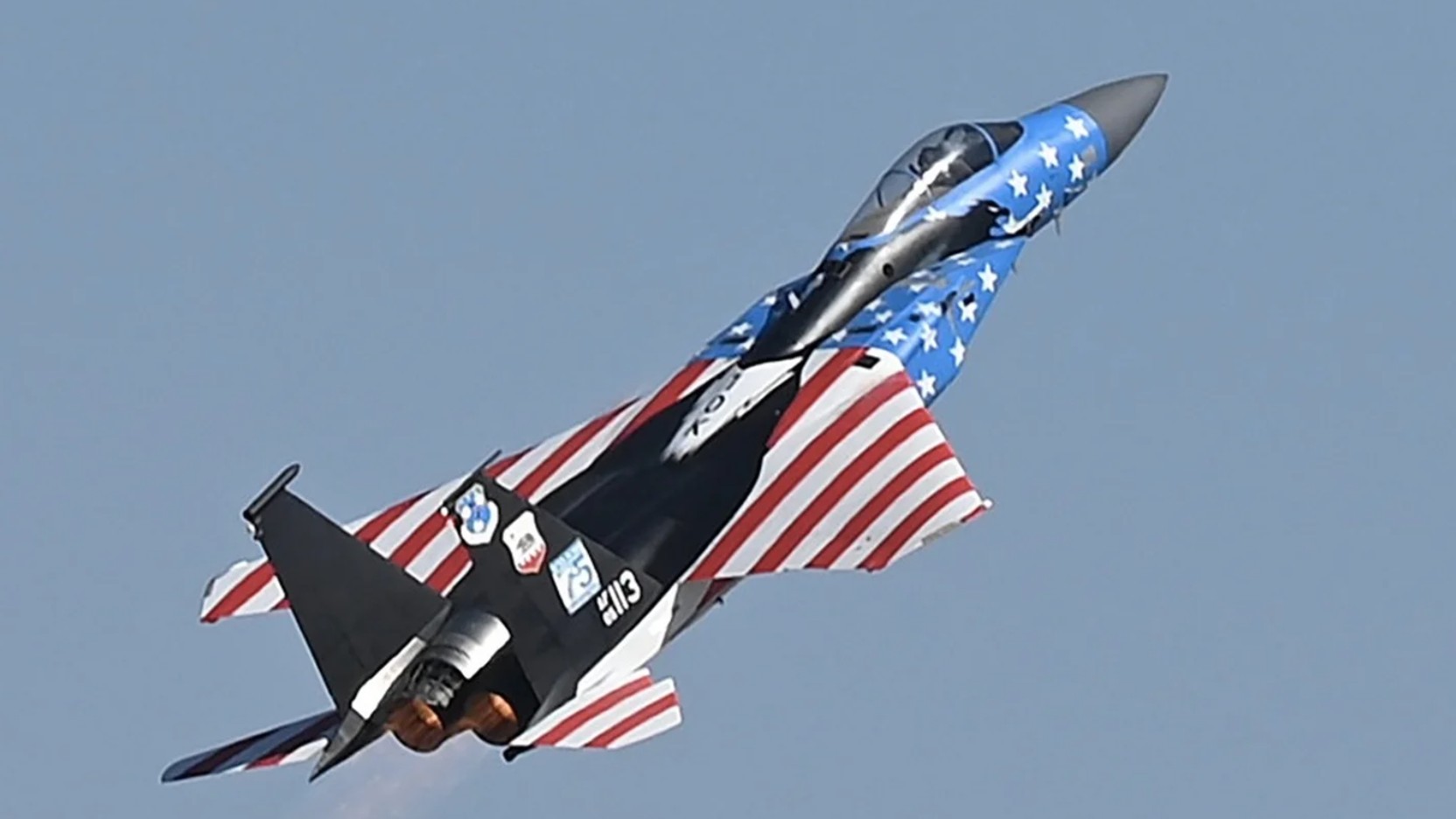On November 10, an Air National Guard F-15C jet based in Fresno performed an emergency landing after an in-flight emergency during a morning training mission, 144th Fighter Wing Public Affairs Office said.
The pilot was forced to return to Fresno Yosemite International Airport after the plane, which is part of the California Air National Guard’s 144th Fighter Wing, apparently spilled an undisclosed amount of fuel during the mission.
Moreover, the incident was also recorded on video. The footage shows the F-15C flying toward the runway while releasing a spray of fumes from its rear.
The dump, also known as a “fuel vent,” is the intended ejection of kerosene-based fuel from the plane under specific situations such as landings.
An F-15 fighter jet pilot had to make an emergency landing this morning after his plane started leaking fuel in mid-air. We have an exclusive video you'll only see right here on @KMPHFOX26 tonight. Watch the full story as traffic control speaks to the pilot for safe landing: pic.twitter.com/QgibfohoKG
— Mayra Franco (@MayraFrancoTV) November 11, 2022
According to Master Sgt. Charles Vaughn of the 144th Fighter Wing, the fuel vent that occurred on Thursday was “not supposed to happen” and was not started by the pilot. The Air National Guard stated that there was “no substantial hazard to the local population,” and the incident is being investigated.
“Most of the fuel should have dissipated” before it reached the ground,” Vaughn said. The amount of fuel that made it to the ground, if any, will also be investigated by the Air National Guard.
Nevertheless, the Air National Guard pilots have operated warplanes on patrol and training operations from Fresno Yosemite International Airport for nearly 70 years. The Fresno Air National Guard base has long been a critical West Coast installation for deploying advanced fighter aircraft.
New Fighter Jets Due For 144th Fighter Wing
The F-15C and D models stationed at the base since 2013 are nearing the end of their service lifespan. The deployment of three new aircraft squadrons is anticipated between 2026 and 2028.

These three squadrons will consist of one squadron of stealthy F-35A Lightning II jets and two squadrons of high-performance F-15EX Strike Eagle planes.
Yet, experts are worried that the base might not receive the new, high-tech planes as the Air Force and Department of Defense examine where they intend to “bed down” a new generation of cutting-edge planes to replace the outdated ones.
Will Strickland, who heads the environmental study of the base options for the Defense Department’s National Guard Bureau, previously said that if Air Force made the decision not to deploy new aircraft at Fresno, it is possible that the fighter wing could operate its current legacy F-15C and D aircraft for a limited period.

In September 2022, California legislators wrote to Air Force Secretary Frank Kendall to demand that the Air Force supply F-35 or F-15EX fighters to replace the current F-15C aircraft.
The lawmakers contended that the F-35 or F-15EX would allow the 144th Fighter Wing to enhance its critical and long-standing role of providing air dominance and homeland security from its strategic location near the Pacific.
Meanwhile, the Air Force’s original acquisition of F-15EX fighters was reduced from 144 to 80 aircraft. The planned procurement would replace the three existing Air Force or Air National Guard squadrons. However, this would leave five other squadrons of F-15C and D without F-15EX or F-35A replacements.
F-35 and F-15EX Fighter Aircraft
The two new-generation aircraft, F-35 and F-15EX are technological advancements over the older F-15 Eagle C and D variants. Both are expected to cost around $80 million per jet.
The US defense giant Boeing developed the F-15EX Strike Eagle, often known as the Eagle II. It is defined as a multi-role fighter, nearly 64 feet long, with a wingspan of approximately 43 feet.
The Strike Eagle can carry about 30,000 pounds of ordnance on external weapons points and has a more extended range and larger payload than its predecessor Eagle. On the other hand, the F-35 is a fifth-generation aircraft equipped with stealth capabilities.
The land-based Air Force version of the F-35 Joint Strike Fighter is designated as F-35A Lightning II. Additionally, the Navy has the F-35C carrier-based variant, and the Marine Corps has the short-takeoff and vertical-landing F-35B.
The multi-role Lightning II fighter will eventually replace the F-15 Eagle, F-16 Falcon, and A-10 Warthog. With a wingspan of only 35 feet, it is smaller than the Strike Eagle, measuring around 51 feet.
The aircraft has a ceiling of 50,000 feet, a combat radius of 670 miles, and can carry up to 18,000 pounds of munitions in internal bays and on exterior weapons points.
- Contact the author at ashishmichel@gmail.com
- Follow EurAsian Times on Google News




